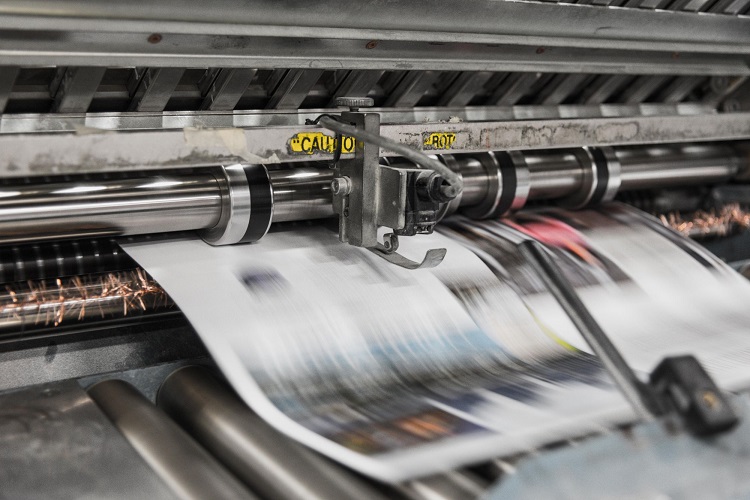This comprehensive guide sets out to demystify electrical slip coupling, a vital yet often overlooked component in several machinery applications. The article begins by laying the groundwork with some fundamental knowledge of what electrical slip coupling is and why it’s crucial in electrical and mechanical systems. It then delves into the operating mechanics, explaining intricate details using simplified analogies and diagrams for easy understanding.
Different types and varieties of slip couplings are discussed next, highlighting their unique characteristics and suitability for various purposes and industries. To help visualize the scope of slip couplings, a section is dedicated to detailing its numerous applications, illustrated effectively through real-world examples and case studies.
A balanced view is then presented, discussing both the advantages and limitations that come with using slip couplings – a topic crucial for those seeking to implement this technology. Choosing the right slip coupling for individual needs could be tricky, so a detailed guide is provided to help readers make informed decisions.
Once a slip coupling is selected and installed, maintenance becomes key. With this in mind, insightful tips on routine upkeep and troubleshooting steps for common issues are shared. Lastly, the article plunges into the realm of innovation and future trends shaping the world of electrical slip coupling, a section designed to ignite curiosity and foster forward thinking.
Introduction to Electrical Slip Coupling: A Foundational Overview
Electrical slip coupling, often seen as an enigma outside specialist circles, plays a pivotal role in the seamless operation of countless devices and machines that power our daily lives. But what exactly is this critical component, and why does it matter so much in both electrical and mechanical systems?
Understanding Electrical Slip Coupling
At its core, electrical slip coupling is a sophisticated device designed to control the transfer of power between two shafts, one driven by motor power and the other driven by the load demand. Unlike rigid couplings, slip couplings allow for a controlled amount of ‘slip’ between input and output shafts, typically to manage torque, protect against overloads, or handle variations in speed due to load changes. Imagine a car’s clutch that carefully moderates the power from the engine to the wheels, providing a smooth ride despite changes in terrain or load – that’s the essence of slip coupling in action.
Its Significance in Systems
The significance of electrical slip coupling extends far into both electrical and mechanical realms. In electrical systems, it plays a crucial role in managing the flow of electric power, akin to a valve in a water pipe that controls water pressure. By allowing precise control over the torque and speed transmitted between connected components, these couplings protect sensitive equipment from damage caused by sudden surges or overloads.
Mechanically, slip couplings safeguard machines by accommodating misalignments and variations in operational speeds, thus reducing wear and tear on components. This feature is particularly significant in industries where precision and reliability are paramount, such as in manufacturing conveyor belts, automotive assemblies, or even in the delicate operations of robotics.
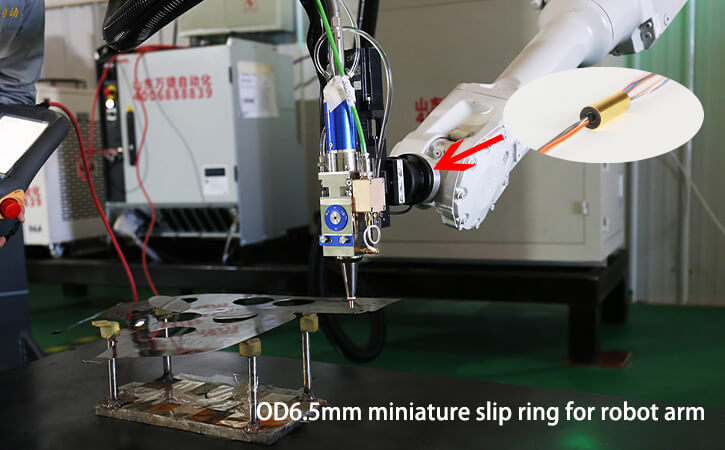
The Impact Through Examples
Consider the case of a modern manufacturing assembly line, which requires precise speed adjustments to synchronize different parts of the process seamlessly. An electrical slip coupling integrated into the system allows for minor speed adjustments that keep the assembly line flowing smoothly, preventing bottlenecks and ensuring a consistent quality of the output.
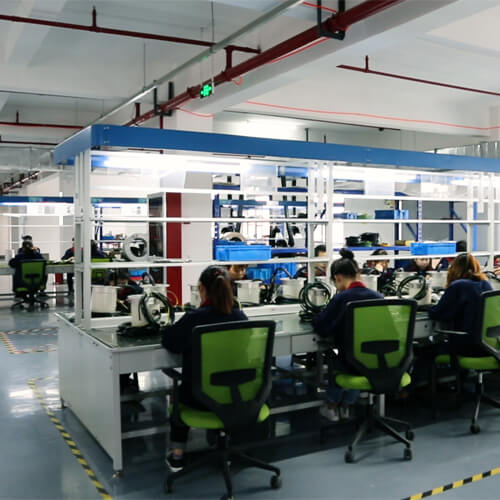
Similarly, in the renewable energy sector, wind turbines use slip couplings to manage the variable torque generated by changing wind speeds. This not only maximizes the efficiency of power generation but also protects the turbine’s intricate machinery from damage during sudden gusts or turbulent weather conditions.
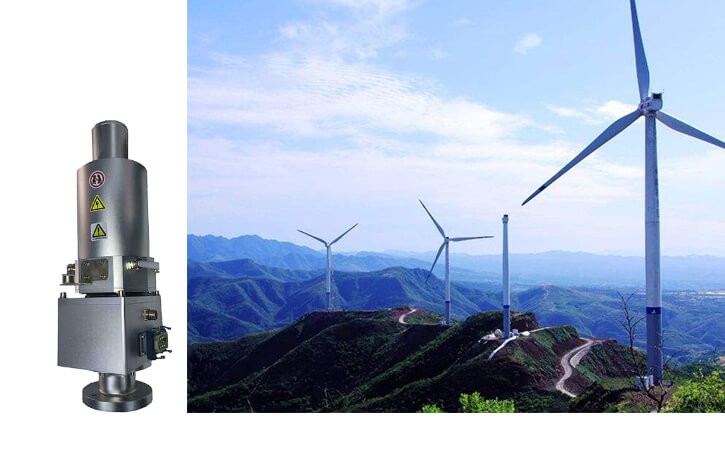
Through these examples, it’s clear that electrical slip couplings are not just components; they are essential guardians of efficiency and longevity in electrical and mechanical systems. By allowing a controlled degree of flexibility, they ensure that machines can adapt to the demands of their tasks without sacrificing performance or durability. As we delve deeper into the mechanics, types, and applications of electrical slip couplings, we uncover the intricate dance of power and precision that defines modern machinery and technology.
The Mechanics of Electrical Slip Coupling: How It Works
To say that electrical slip couplings play a pivotal role in many power transmission systems is one thing. However, understanding the nuts and bolts of this magical motor component is quite another matter. To really appreciate how crucial they are, we need to dive into how they operate and manage to offer so much control and protection in electrical and mechanical systems.
Operational Principles of Electrical Slip Couplings
By design, an electrical slip coupling consists of two key parts—the driver and the driven—only loosely connected. In simple terms, the driver (motor side) attempts to turn the driver (load side), but since they’re not rigidly attached, some ‘slip’ ensues. This controlled slip is precisely the ingredient that makes this type of coupling such a valuable tool in power transmission systems.
In technical parlance, the slip—defined as the difference in speed between the driver and the driver—allows electrical slip couplings to manage torque transmission. When the load is light, the slip is minimal, and power is transmitted from the motor to the load shaft mostly unhindered. This means that the motor and the load turn nearly at the same speed.
However, when the load increases, the slip grows more pronounced. The motor shaft turns at a faster rate than the load shaft, facilitating a “buffer” that prevents the load from suddenly drawing too much power from the motor. In essence, it’s a self-regulating mechanism that protects both the motor and the load from potential damage.
Simplifying the Mechanics: An Everyday Analogy
To illustrate how an electrical slip coupling works, let’s imagine a classic scenario: a child and a parent playing with a jump rope. The parent (the driver, the motor) spins the rope (the power) while the child (the driver, the load) tries to keep up with the spinning, jumping in and out of the circle of the rope.
When the parent spins the rope at a bearable pace, the child hops smoothly, matching the rope’s speed almost precisely—minimal slip. However, if the parent suddenly speeds up, the child can’t match the pace, causing an increase in ‘slip.’ This increased slip is the child’s pause between jumps. It helps the child control their jumping speed and protects them from falling or getting tangled in the rope.
So, to summarize, the duty of an electrical slip coupling amounts to being a ‘power moderator.’ Its key function is to allow a controlled degree of slip to manage torque and protect both the motor and the load from damage. This self-regulating mechanism takes what could be a chaotic transfer of power and tames it into a controlled, efficient transfer that ensures the smooth functioning of equipment. With this understanding of how electrical slip couplings work, we can now explore the different types of these couplings and understand their varied applications.
Types and Varieties of Electrical Slip Coupling
Even though the underlying principle remains the same, electrical slip couplings come in an assortment of types and variations designed to meet the extraordinarily diverse needs of various applications and industries. Their differentiating factors typically lie in the mechanisms they use to achieve the desired amount of ‘slip’ and the circumstances under which they operate best.
Graduated Slip Couplings
A central character in the world of slip couplings, the graduated slip coupling, is designed to allow a variable degree of slip contingent on load conditions. Think of it as a thermostat that adjusts heating depending on the room temperature. As loads increase, these couplings allow a proportionally greater amount of slip, thereby providing finer control over torque transmission. They are favored in applications that involve frequently fluctuating loads or speeds, like conveyor belts in manufacturing plants or elevators in a building.
Constant Slip Couplings
While graduated slip couplings are adaptive, constant slip couplings, as the name suggests, provide a set degree of slip regardless of load conditions, much like a ceiling fan’s constant speed setting. These couplings are specifically made for circumstances where load conditions are constant and predictable, such as in ventilation systems or specific types of pumps.
Heavy-Duty Slip Couplings
When a scenario calls for uncompromising strength, heavy-duty slip couplings step up to the plate. These robustly built slip couplings are designed to manage high-torque applications in challenging conditions, such as in heavy machinery, automotive drivetrains, or mining equipment. They offer adjustable slip settings that help handle loads ranging from heavy to extreme.
Specialized Variations
Beyond these broad categories, there exist numerous specialized slip couplings tailored for unique use cases or fields. For instance, there are high-speed slip couplings designed for turbomachinery applications, hygienic slip couplings for food and beverage industry applications, and even flexible slip couplings that handle slight misalignments or vibrations in the system.
Coupling the Right Type to the Right Application
Matching the right type of slip coupling to its intended use is crucial to ensure optimal performance and longevity of equipment. For example, using a graduated slip coupling in a scenario better suited for a constant slip coupling might lead to unnecessary wear and tear on the system.
In the construction industry, heavy-duty slip couplings are often seen in cement mixers, capable of handling intense torque and resisting harsh environments. Meanwhile, in delicate bottling plant machinery, a hygienic slip coupling ensures smooth operation while meeting the industry’s strict sanitation standards.
Choosing the right electrical slip coupling boils down to understanding the load conditions and requirements of the application, the environmental considerations, and the specific industry standards. With an appreciation for this variety and an understanding of the characteristics of different types of slip couplings, users can make more informed choices when it comes to selecting the best fit for their needs.
Key Applications of Electrical Slip Coupling in Various Sectors
Electrical slip couplings are the unsung heroes of many mechanical systems, their presence is often unnoticed until a dire need reveals their criticality. These components serve a multitude of sectors, each with unique demands, and their applications range from the precision necessary in digital printers to the unforgiving ruggedness required in mining equipment.
Automotive Excellence Through Slip Coupling
In the automotive sector, slip couplings are integral to the transmission and differential units of a car. Here, they aid in the smooth delivery of torque to the wheels, catering to the needs of different driving conditions. For example, in the case of an all-wheel-drive system, slip couplings help distribute power between the front and rear wheels depending on traction, hence ensuring the vehicle’s stability and passenger safety.
The innovative use of these couplings in automotive applications spotlights their ability to enhance performance and safety—all while ensuring the comfort of the ride. A known automotive brand exhibited a significant reduction in tire wear and improvement in fuel efficiency after integrating advanced slip couplings into their drivetrain design, showcasing the real-world benefits of these components.
Industrial Machinery: Maximizing Productivity with Slip Couplings
Moving to the industrial realm, slip couplings are found at the heart of many machines. They eliminate the risk of torque overload in heavy-duty conveyors and processing equipment. A food processing plant, for example, may use slip couplings to prevent jamming and damage to the machinery if something goes wrong on the production line, like an unexpected blockage. This not only protects the equipment but also minimizes downtime, ensuring a consistent production flow.
Enabling Renewable Energy
In the burgeoning field of renewable energy, especially in wind turbines, electrical slip couplings are pivotal. They are employed to manage the inconsistent torque generated by the variable wind speeds. A renowned wind turbine manufacturer credits slip couplings for a considerable increase in their turbines’ efficiency, directly contributing to more sustainable power generation and a reduced ecological footprint.
Specialized Applications: When Precision Is Paramount
Delicate applications such as robotics and digital printing also depend on slip couplings. In advanced robotics, they facilitate precision by ensuring that each movement is smooth and controlled, protecting delicate components from damage. Similarly, specialized slip couplings in high-speed digital printers allow for meticulous control, contributing to crystal-clear image quality.
The Undeniable Importance in Everyday Life
Each application emphasizes the versatility and necessity of slip couplings. They are key to safety in the vehicles we drive, the consistency in the products we consume, the efficiency of the renewable energy we harness, and the precision of the technology we utilize in work and leisure. This wide-ranging applicability speaks volumes about their utility in the modern world.
Despite their varied uses, the one constant across all applications is the need for a reliable and appropriate coupling solution that can adapt to different operational conditions. Matching the right slip coupling to the task not only promotes efficiency but also prolongs the life span of valuable machinery. Through understanding their key applications across various sectors, it becomes clear that electrical slip couplings form an essential backbone to several facets of modern industry and technology.
Advantages and Limitations of Using Electrical Slip Coupling
The deployment of electrical slip couplings across a myriad of applications underscores their indispensable role in powering and protecting machinery. Yet, while their benefits are vast, understanding their limitations is equally crucial for optimizing their use. This balanced perspective ensures a comprehensive grasp of how slip couplings can best serve various industries.
Advantages of Electrical Slip Couplings
Torque Management: Slip couplings excel in managing torque, distributing power smoothly, and preventing the harsh impacts of direct power transmission. This gentle management reduces wear on machinery, extending the lifespan of expensive equipment. For instance, in the precision-required operations of CNC machines, slip couplings safeguard the mechanism from damage due to abrupt movements or load changes, ensuring smooth operation and precision work.
Protection Against Overload: One of the key advantages of slip couplings is their ability to protect against overload conditions. They act as a safety valve that mitigates torque spikes, preventing potential damage to the motor and the machinery. This is especially crucial in industries where machinery is subject to variable loads, such as manufacturing plants where the likelihood of material jamming can pose a significant risk.
Versatility Across Industries: The adaptability of slip couplings to various sectors—from automotive to renewable energy—demonstrates their versatility. Their application across different industries means they can be designed to meet specific requirements, whether it’s handling the variable torque of wind turbines or ensuring the precise control needed in robotics.
Ease of Maintenance: Many slip couplings are designed with ease of maintenance in mind. This is particularly beneficial in demanding industrial environments where downtime can mean lost productivity. A case study in a major industrial facility highlighted how the integration of easily maintainable slip couplings led to a substantial decrease in maintenance time and costs.
Limitations and Challenges
Heat Generation: The friction inherent in the operation of slip couplings leads to heat generation. Excessive heat can degrade the coupling over time, necessitating efficient cooling systems in applications where slip couplings operate continuously under high loads. For example, in high-performance engines, designers must incorporate advanced cooling solutions to mitigate the heat produced by slip couplings.
Wear and Tear: Although slip couplings are designed to protect machinery, the friction involved in their operation means they’re subject to wear and tear themselves. Regular inspection and maintenance are crucial to ensure their longevity, particularly in settings with extreme loads or continuous operation.
Precision Limitations: While slip couplings offer remarkable control, the finite precision in some high-precision applications can be a limitation. For applications requiring ultra-precise load management, such as in high-speed spindles in machining centers, engineers might need to look towards more specialized solutions.
Cost Considerations: The initial cost and the maintenance expenses of high-quality slip couplings can be significant. For small-scale operations or applications where budget constraints are rigid, the cost-benefit analysis of implementing slip couplings needs careful consideration.
Navigating the Terrain
Understanding both the strengths and weaknesses of electrical slip couplings enables industries to navigate their limitations while maximizing their many benefits. Tailoring the choice of slip coupling to the specific needs of the application, coupled with proactive maintenance practices, can mitigate many of the challenges discussed. Through informed selection and diligent care, the advantages of slip couplings can be fully leveraged, enhancing efficiency, safety, and productivity across a broad spectrum of applications.
Selecting the Right Electrical Slip Coupling for Your Needs
Choosing the most suitable electrical slip coupling can seem like navigating a labyrinth, given the plethora of options available. However, understanding key factors such as size, torque capacity, application environment, and specific requirements can illuminate the path to the ideal selection. Let’s delve into these considerations and explore questions to ask when embarking on this decision-making journey.
Understanding Core Selection Criteria
Size and Installation Space: The physical dimensions of a slip coupling are paramount. Space constraints within your machinery dictate the size of the coupling you can accommodate. For example, in compact applications such as small motors used in medical devices, a slip coupling with a small footprint is essential. On the other hand, industrial machinery like large conveyors might have more flexibility in space but would require couplings that can handle higher torque.
Torque Capacity: Torque requirements are at the heart of choosing a slip coupling. It’s essential to understand the maximum torque your application will subject the coupling to. For instance, heavy-duty applications such as mining equipment demand slip couplings that can withstand high torque levels without failure. Using a coupling that can’t handle the load might lead to frequent replacements or, worse, equipment failure.
Application Environment: The operating environment influences the material and design of slip couplings. In environments exposed to chemicals, moisture, or extreme temperatures, choosing a coupling made from materials resistant to these conditions is crucial. A case in point is in the chemical processing industry, where slip couplings must resist corrosive substances to ensure longevity and safety.
Dynamic Requirements: Consider whether your application involves variable speeds, frequent starts and stops, or reversible operations. These dynamic aspects require slip couplings that can adapt to changing conditions without compromise. For example, conveyors that frequently start and stop would benefit from slip couplings designed for such cyclical torque demands.
Key Questions to Guide Your Selection
What is the Maximum Torque Requirement?
Understand the peak torque your application will reach to ensure the slip coupling can handle it comfortably.
What Size and Weight Constraints Exist?
Assess the physical space available for the coupling to determine the maximum size you can accommodate.
What are the Environmental Conditions?
Identify any environmental factors such as temperature extremes, moisture, or corrosive substances that could affect the coupling’s performance.
How Dynamic are the Operational Conditions?
Consider if the application involves frequent speed changes, direction reversals, or intermittent operations, which could dictate the type of slip coupling best suited to your needs.
What is the Expected lifespan?
Determine your expectations for the coupling’s service life, considering maintenance schedules and potential wear and tear.
Real-world Application Insights
A manufacturing plant recently faced frequent downtime due to coupling failures in its conveyor system. By evaluating their requirements and answering the key questions outlined, they selected a heavy-duty slip coupling designed for high torque and variable speeds. This choice resulted in a significant reduction in maintenance costs and improved operational efficiency.
Selecting the right electrical slip coupling is a strategic decision that can influence the efficiency, reliability, and longevity of your machinery. By meticulously considering size, torque capacity, environmental factors, and dynamic operational conditions, and by asking the right questions, you can navigate the complexities of choice with confidence. Anchoring your selection in a clear understanding of your application’s demands ensures that the slip coupling you choose will enhance performance and support uninterrupted operation.
Maintenance and Troubleshooting of Electrical Slip Coupling
Proper maintenance and effective troubleshooting are keystones in ensuring the longevity and optimal performance of electrical slip couplings. By adhering to routine maintenance practices and understanding common issues that may arise, users can significantly reduce downtime and extend the service life of their equipment. In this exploration, we will delve into essential maintenance tips and address troubleshooting steps for typical problems encountered with electrical slip couplings.
Routine Maintenance for Longevity and Performance
Regular Inspections: A cornerstone of preventive maintenance is the routine inspection of slip couplings. Inspecting for physical damage, wear, and signs of corrosion can help identify issues before they escalate. For example, a visual check might reveal cracks or wear on the coupling surfaces, prompting immediate action.
Lubrication: Many slip couplings require regular lubrication to minimize friction and wear. Use the correct type and amount of lubricant as specified by the manufacturer. Too little lubrication leads to increased wear, while too much can attract dirt and particulate matter, leading to contamination and decreased performance.
Alignment Checks: Misalignment between the motor and the driven load can cause uneven wear and tear on the slip coupling. Ensuring proper alignment during installation and conducting regular checks can prevent such issues. A case in point is a textile manufacturing plant that reduced its coupling failures by instituting a quarterly alignment check as part of its maintenance schedule.
Torque Settings Adjustment: Over time, the operational characteristics of machinery can change, requiring adjustments to the slip coupling’s torque settings. Ensuring these settings are optimized for current operating conditions can enhance performance and prevent overload conditions.
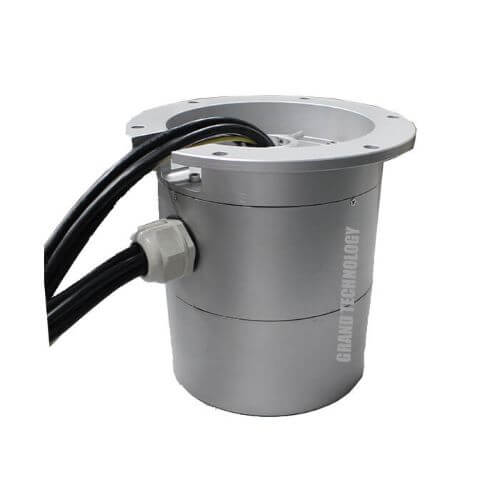
Troubleshooting Common Issues
Coupling Slips Too Much or Not Enough: If the coupling slips too much, it could indicate excessive wear or incorrect torque settings. Conversely, not slipping enough might mean the coupling is too tight or the friction surfaces have seized. Adjusting the torque settings or inspecting the coupling for wear and lubrication issues can resolve these problems.
Excessive Heat Generation: While some heat generation is normal, excessive heat can indicate misalignment, inadequate lubrication, or overloading. Checking alignment, lubrication status, and ensuring the coupling is operating within its torque capacity can mitigate excessive heat issues.
Noise and Vibration: Unusual noises or vibration from the area of the slip coupling often signal misalignment, imbalance, or wear. Conducting a thorough inspection to identify the root cause—whether it’s misalignment or parts requiring replacement—can address these symptoms.
Reduced Machinery Performance: If machinery performance declines, the slip coupling might not be transmitting torque efficiently. This could be due to wear, incorrect torque settings, or issues with the coupling’s internal components. A comprehensive check to adjust, repair, or replace parts as needed can restore performance.
Real-world Example
A packaging facility recently encountered issues with one of its main conveyors, experiencing frequent downtimes due to slip coupling failures. By implementing a structured maintenance regime focusing on regular inspections, lubrication, alignment checks, and adjusting torque settings based on wear and operational demands, they significantly reduced failures. This proactive approach not only minimized downtime but also extended the life span of their couplings and associated machinery.
The maintenance and troubleshooting of electrical slip couplings are critical in preventing downtime and ensuring the efficient operation of machinery. Through routine inspections, proper lubrication, alignment checks, and timely adjustments, many common issues can be preemptively addressed. Moreover, understanding and promptly responding to signs of trouble—such as excessive slipping, heat, noise, or vibration—can prevent minor issues from becoming major setbacks. Investing time in maintenance and troubleshooting ultimately contributes to the longevity and optimal performance of slip couplings, fostering uninterrupted and productive operations.
Innovation and the Future of Electrical Slip Coupling
The world of electrical slip coupling, like many industrial components, is continuously evolving, fueled by technological advancements and innovative engineering techniques. These advancements not only increase efficiency and reliability but also widen the possibilities of application. Here, we’ll explore the cutting-edge developments shaping the present and future landscape of slip coupling.
The Present: Current Innovations in Slip Coupling Technology
Material Science Advances: The development of new materials and composites is bringing unprecedented improvements to slip coupling design. These materials offer superior properties such as high strength-to-weight ratios, corrosion resistance, and excellent heat dissipation. The implementation of such materials can significantly enhance the durability and performance of slip couplings.
Smart Sensing and AI Integration: Today’s slip couplings are far more sophisticated than their predecessors, thanks to the integration of smart sensors and artificial intelligence. Sensors embedded in the couplings can monitor parameters like torque, speed, temperature, and vibration in real-time, enabling predictive maintenance and operational efficiency. Additionally, with the integration of AI algorithms, the smart coupling system can automatically adjust torque settings based on real-time performance data, reducing the need for manual intervention and thereby enhancing productivity.
3D Printing: Additive manufacturing, or 3D printing, has emerged as a game-changing technology in the production of slip couplings. It allows manufacturers to produce complex designs with unparalleled accuracy and speed, reducing production times and costs.
Speculating the Future: Tomorrow’s Trends in Slip Couplings
IoT and Connectivity: As the Industrial Internet of Things (IoT) continues to proliferate, we can anticipate further integration of slip couplings into connected industrial ecosystems. This connectivity will allow for more seamless data sharing between devices and systems, further optimizing operations and enabling more comprehensive condition monitoring and preventive maintenance.
Green Energy Initiatives: With the growing emphasis on sustainability and energy efficiency, we can expect developments in slip couplings that contribute to these objectives. These might include designs that minimize energy loss, use eco-friendly materials, and can be easily recycled or decommissioned at the end of their lifecycle.
Personalized Solutions: The future might see an increased demand for bespoke slip coupling solutions tailored to unique application needs. This trend will be supported by technologies like 3D Printing and advanced modeling software that allows for cost-effective customization.
Case Study: Smart Slip Couplings in Action
A leading manufacturer of wind turbines recently integrated smart, sensor-equipped slip couplings into their operations. This implementation allowed them to continuously monitor coupling performance in real time and predict potential failures before they occurred. Further integrating AI, they managed to automate many manual processes, reducing their maintenance costs and boosting overall operational efficiency.
Innovation is the lifeblood of technological progression, and it is excitingly evident in the realm of electrical slip coupling. From the integration of advanced materials to smart technology, AI, and 3D printing, the landscape of slip coupling technology is being transformed. As we look to the future, it’s clear that trends like IoT integration, sustainability initiatives, and personalized solutions will further push the boundaries of what’s possible. With every step, these advancements bring us closer to a world where electrical slip couplings and the machinery they support perform more efficiently, reliably, and seamlessly than ever before.
Conclusion: The Undeniable Importance of Electrical Slip Coupling
Throughout this exploration, we’ve journeyed deep into the world of electrical slip couplings, uncovering their integral role in a multitude of applications across a vast array of industries. These innovative components are vital cogs in the machinery that drives our modern world, underpinning the performance and reliability of many systems that we depend on daily. Let us summarize their key contributions and reaffirm their value.
The Vital Role of Slip Couplings Across Sectors
Indispensable in Diverse Applications: Slip couplings serve as crucial elements in industrial machines, automotive assemblies, marine propulsion systems, and renewable energy generators, to name a few. They’re designed to ensure seamless power transmission while protecting machinery from potential harm due to torque overload and misalignments.
Flexibility and Adaptability: Their versatile nature allows for broad customization, meaning they can be tailored to fit niche requirements of specialized machinery – from heavy-duty industrial presses to precision laboratory equipment.
Enhanced Machine Longevity: By providing a form of ‘give’ within mechanical systems, slip couplings effectively reduce mechanical shock and mitigate the risk of wear and damage to key components, thereby extending the operational lifespan of the equipment they serve.
Efforts in Efficiency and Innovation: As we have seen, the ongoing advancements in material science, smart technology, and manufacturing techniques continue to refine and enhance slip couplings, ensuring they remain at the cutting edge of industrial technology.
Embracing Technology for Future Gains
Consider Your Needs: Reflect on your own industry’s demands or your specific machinery. Whether it requires precise control, rigorous power transmission, or protection against operational stress, slip couplings can be tailored to meet these specific needs.
Staying Ahead with Smart Solutions: Embrace the technological advancements such as IoT connectivity and AI integration that promise not only improved operational efficiency but also predictive maintenance capabilities, thus offering peace of mind and reduced unexpected downtime.
Invest in Quality and Innovation: By investing in the latest slip coupling technologies, you are not only equipping your operations with robust and reliable hardware but are also future-proofing your machinery against the wear and tear of tomorrow’s challenges.
Real-World Impact: Reflecting on Success Stories
Throughout our discussion, we’ve investigated various scenarios where slip couplings have made a definitive impact. Remember the wind turbine manufacturer that reduced maintenance costs with smart slip couplings or the packaging facility that minimized downtime with a dedicated maintenance program. These are just two of many success stories that highlight the effectiveness of these components in enhancing operational efficiency and reliability.
In conclusion, electrical slip couplings represent more than just a mechanical link within an assembly; they are pivotal elements that bear the dual responsibility of enabling motion and protecting the system from damage. Their continued evolution is a testament to their importance and the ingenuity of those who develop and improve them. Consider how investing in the right slip coupling technology can not only conserve your resources but also pave the way for smoother, more efficient operations. In the intricate dance of industrial machinery, the slip coupling is an indispensable partner, and its tune is one of innovation, protection, and seamless performance.


